Artificial Eyes: Prosthetics or Bionic eyes.
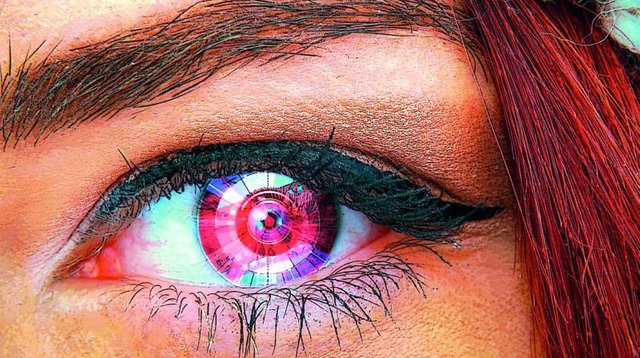
The two major types of artificials eyes
1. Ocular Prosthetics: It is a replacement for a missing or injured, unsightly eye. It does NOT restore sight. People who have suffered the loss of an eye will benefit from the restoration of normal eye appearance, helping to restore self confidence .
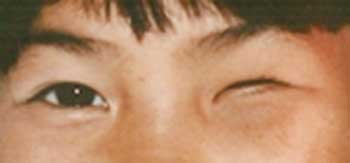
BEFORE
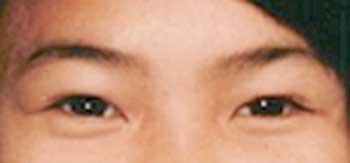
AFTER
Looks exactly like the real thing.
2. Bionic (electronic) Eyes: These are novel prosthetic devices and surgical implant techniques that are offering the miracle of vision to sufferers of retinitis pigmentosa and other sight-stealing conditions.
Basically, a bionic eye is an implantable miniature telescope from the company VisionCare. The device focuses a magnified view of intact central vision onto a healthy part of the macula, to address age-related macular degeneration. [VisionCare]
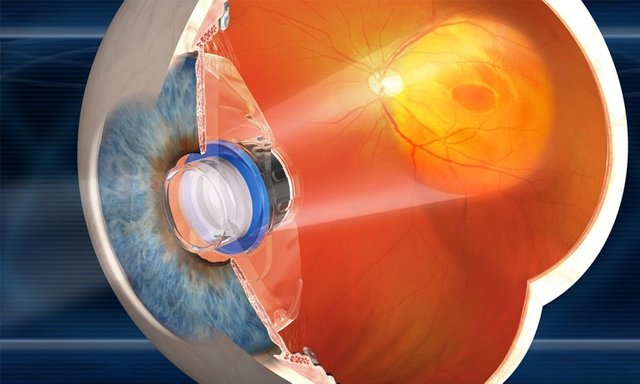
Ophthalmology has made incredible strides in the past decade in surgical vision correction and disease diagnosis—yet those facing complete blindness have remained largely without hope but now scientists and surgeons have begun accomplishing the seemingly impossible: restoring sight to those who had lost it.
According to the World Health Organization, over 285 million people worldwide are blind or vision impaired—90 percent of them living in low-income settings, and 82 percent at least 50 years of age. Loss of vision means inability to read, identify loved ones and confidently execute everyday activities like walking down the street or reaching for a glass of water.
The Advent of Electronic eyes
After 25 years of development, optics and optoelectronic technology in the form of bionic eye implants have emerged as a promising approach to sight restoration. In just the past year, bionic vision prosthetics have progressed from proving their efficacy in clinical trials to becoming a commercial reality. YES! They are now commercially available. As of early 2017, the prosthetic eye is already providing life-changing sight to nearly 900 severely vision-impaired patients around the world.
The Argus II
The first commercially available artificial retina system to treat RP is the Argus II, manufactured by Second Sight Medical Products in Sylmar, Calif., USA. The Argus, an epiretinal system (that is, one placed on the top of the retinal surface), was first implanted in a human patient in 2006. More patient implants followed, and after years of clinical trials, training of patients, development of new measurement techniques, long-term safety studies and device development, the Argus II received the first European Conformity (CE) Mark of approval for a wireless retinal implant in Europe in 2011, and the U.S.
Installing the device
The outpatient surgery takes around three hours. In three weeks, the patient can wear the glasses. The sight restored to the RP sufferers doesn’t approach the “cyber vision” popularized by The Terminator or The Six Million Dollar Man; the resulting images are low-resolution lights that flicker in black and white, enabling users to see walls, lights and facial outlines. Yet restoring even the smallest amount of sight to someone diagnosed with a lifetime of darkness can make a world of difference. Patients require occupational training to enhance their use of the system, but with practice, the brain’s interpretation of the rough signal improves over time. Issani added, “I can see the trees now. I can see light poles, and where to press the button to change the light in the crosswalk. I can see the full moon.”
“When I turned on the glasses, it was an ‘Oh my God’ moment,” said Fran Fulton, who was implanted with the Argus II in July 2014 after 15 years of blindness. “I was able to spot things on the wall and see people come in the room. I was able to walk right through the doorframe. It’s hard to tell a garbage can from someone sitting on the sidewalk, but I can go around it. I can now make decisions and maintain my independence.”
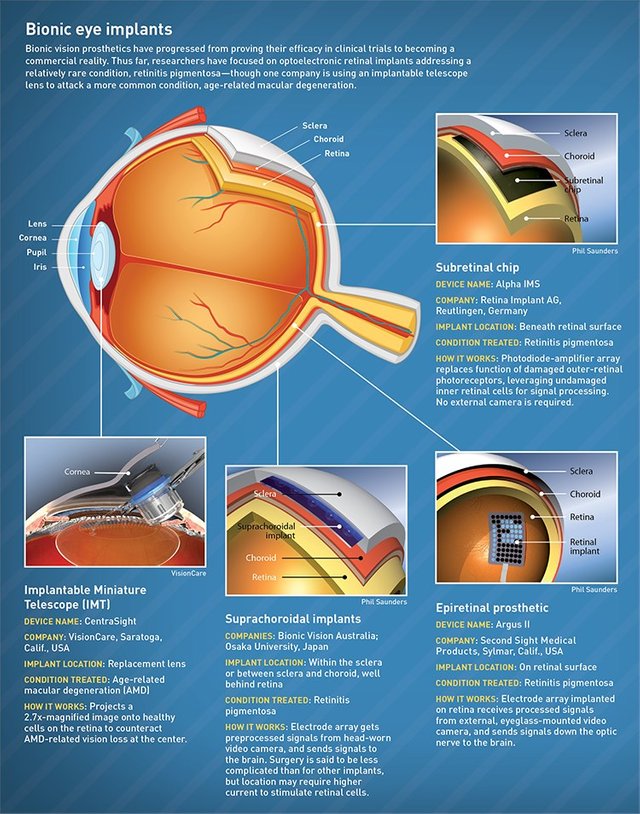
The Alpha IMS
Another retinal implant, the Alpha IMS from the German company Retina Implant AG, became, in 2013, the second wireless retinal implant to receive the CE mark in Europe. The device is a tiny microchip measuring 3 mm2 with 1,500 microphotodiode-amplifier pixels that replace photoreceptor function in the eye. In contrast to the epiretinal Argus II, the Alpha is a subretinal device, implanted beneath the damaged retina to harness the full signal-processing potential of the intact bipolar cells of the inner retina. !( )
)
Another next-generation device from the company, the Alpha AMS, featuring 1,600 pixels, concluded clinical trials early this year. Results were positive; patients with severe blindness from RP achieved improved object detection and identification. Additional clinical trials of the Alpha AMS involving 16 patients will be completed by the end of 2017, with additional trials and studies planned in France and the United States.
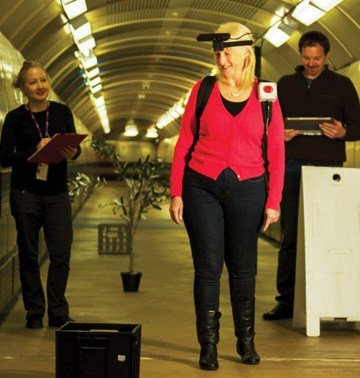 .
.
One of the first recipients of the prototype 24-channel
wearable vision processor developed at Bionic Vision
Australia, blind patient Dianne Ashworth, navigates a
makeshift obstacle course at the Royal Victorian Eye
and Ear Hospital in Melbourne, Australia.
Future Advancements
Another surgical approach to retinal implants, about to begin a second set of clinical trials in Australia, is implantation between the sclera (the tough, white outer layer of the eyeball) and the choroid (the layer of blood vessels between the sclera and the retina). These suprachoroidal implants may offer greater device stability than subretinal or epiretinal approaches, as well as increased patient safety, as the surgery is relatively straightforward and less invasive.
Sources: artificial-eye-clinic.com and Optics and Photonics News
So cool, thanks for sharing! It's crazy how vision technology is growing and constantly evolving. I know there are these low vision aids from OrCam that help with everyday tasks. They have these optical character recognition glasses that are one of the biggest assistive technology products for the blind on the market right now. They essentially use AI to help with reading, face recognition, signs and more. Highly recommend!
Nice post! I will follow you from now on.
Congratulations @thollarkingz! You have received a personal award!
Click on the badge to view your Board of Honor.
Do not miss the last post from @steemitboard:
SteemitBoard World Cup Contest - Quarter Finals - Day 2
Participate in the SteemitBoard World Cup Contest!
Collect World Cup badges and win free SBD
Support the Gold Sponsors of the contest: @good-karma and @lukestokes
Congratulations @thollarkingz! You received a personal award!
You can view your badges on your Steem Board and compare to others on the Steem Ranking
Vote for @Steemitboard as a witness to get one more award and increased upvotes!